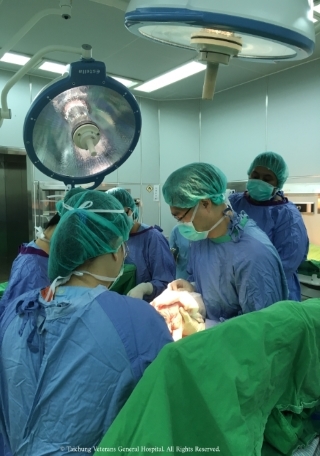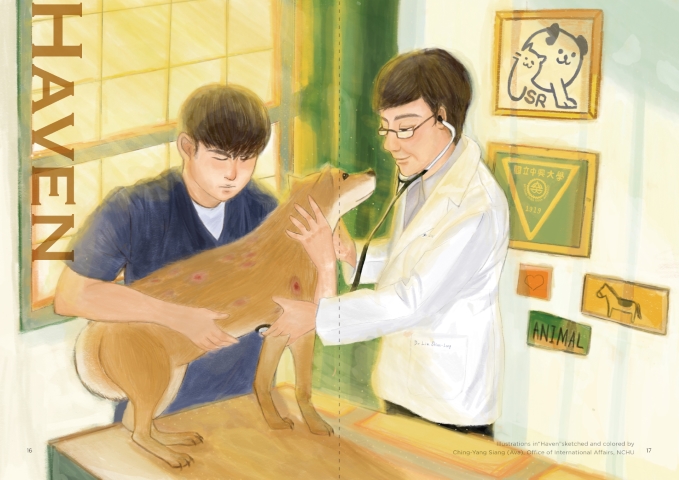Source: Dr. Ming-Hon Hou (Professor, Institute of Genomics and Bioinformatics, NCHU)
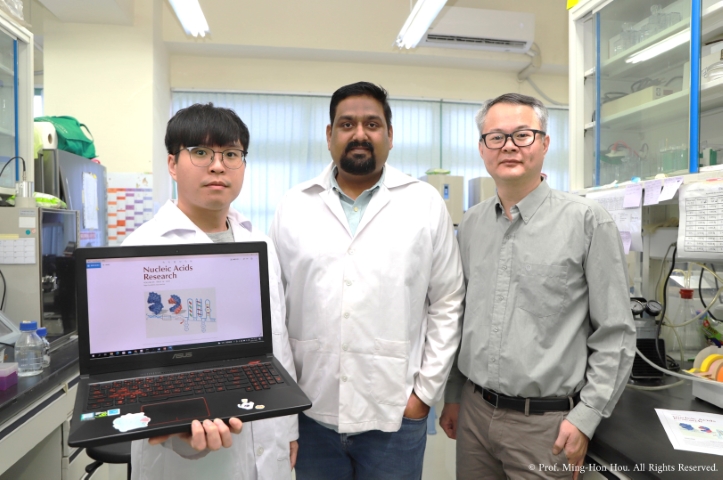
(Right to left) Prof. Ming-Hon Hou (Right), National Chung Hsing University with his team members,
postdoctoral researcher Roshan Satange (Center) , and a current master’s student Shun-Ching Wang (Left).
The human nervous system mainly comprises the brain, spinal cord, muscles ,and connecting neurons. Neurological disorders occur when the normal function of any part of the nervous system is disturbed. Millions of people suffer from certain types of neurological disorders every year. Amyotrophic lateral sclerosis (ALS) and frontotemporal dementia (FTD) are two of the major neurodegenerative diseases characterized by the loss of motor neurons in the brain and spinal cord that affect a person's personal and social life. Previously, these diseases were thought to be independent and distinct neurological disorders because they are heterogeneous at the clinical and neuropathological levels. However, the molecular mechanisms underlying these diseases were poorly understood. Thanks to technological advances in recent years, scientists have discovered that these neurological disorders are not just cognitive disorders or movement disorders, but that a complex genetic mechanism is at the root of these diseases. In 2011, an abnormal expansion of a hexanucleotide DNA repeat sequence, GGGGCC (commonly referred to as G4C2 repeat) on the C9orf72 gene on chromosome 9 was identified as a major cause of ALS/FTD. Therefore, most current strategies focus on targeting toxic RNA or proteins associated with the C9orf72 gene. The molecular-level studies on the G4C2 repeat sequence may therefore provide new clues for the development of effective treatments against ALS and FTD.
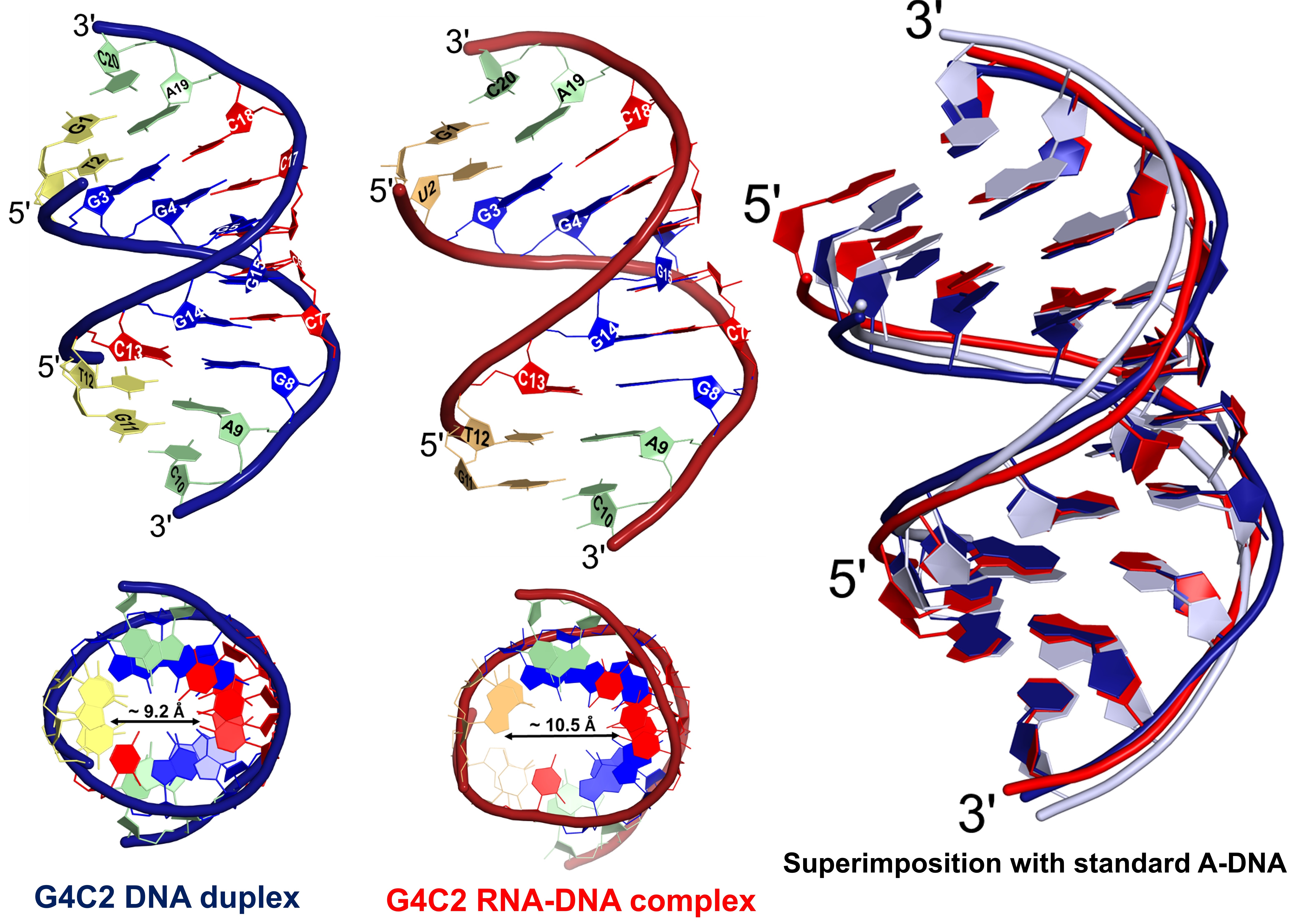
DNA and RNA-DNA hybrid structural features
Source- Nucleic Acids Research
Ming-Hon Hou, the distinguished professor from the Institute of Genomics and Bioinformatics at NCHU, collaborates with scientists from Emory University (USA) and University College London (UK) to develop new strategies to treat neurological diseases. The tricontinental team led by Prof. Hou discovers the ability of G4C2 repeat-expanded DNA motifs on the C9orf72 gene to provide conducive structural features that serve as 'hotspots' for binding metal-anthracene complexes to treat two important neurological diseases, ALS and FTD. The findings are recently published in Nucleic Acids Research, an authoritative journal in the field of nucleic acids (impact factor - 16.97). Using X-ray crystallography and the synchrotron radiation facility at the NSRRC, the team analyzes important structural features of DNA and analogous RNA-DNA hybrid duplexes with G4C2 repeats and find that the DNA double helix structure is a prime target for the incorporation of external small molecular ligands. They screen various GC-selective DNA-binding compounds and reveal that anthracene-based metal-chromomycin (Chro) complexes have the potential to preferentially stabilize the G4C2 DNA duplexes. From a detailed structural analysis of the X-ray crystal structure, the team learns that the metal-chro complexes have extended specificity and bind the flanked G:C base pairs of the GGCC core. This binding of the ligand across the minor groove also results in contraction of the groove and straightening of the DNA backbone. "The unique structural changes in DNA resulting from the binding of Chro could inhibit the formation of toxic transcripts in the resulting abnormal G4C2 expansion sequence and thus may have a therapeutic effect," says Professor Hou.
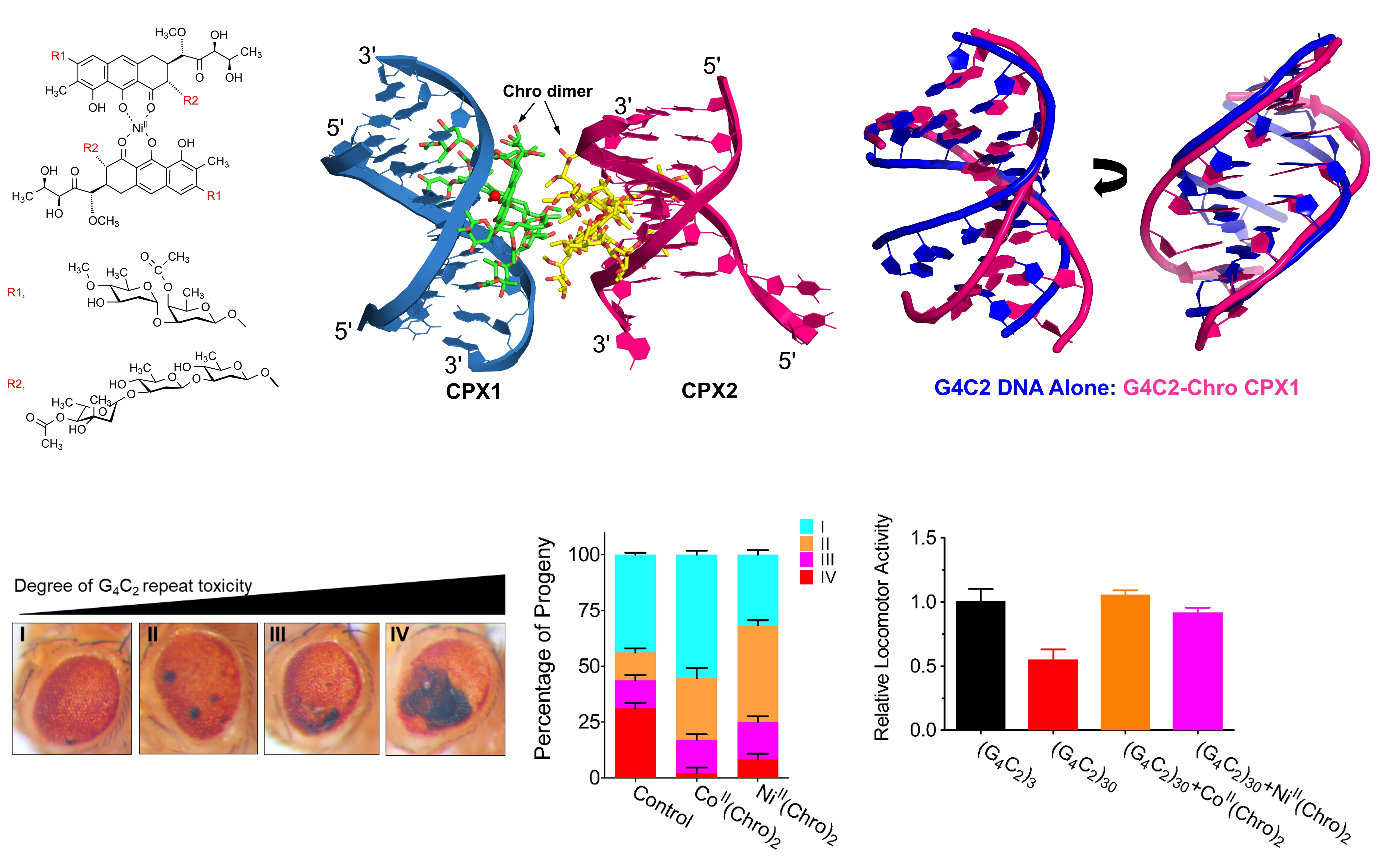
Targeting G4C2 DNA with metal-Chro
Source- Nucleic Acids Research
The team is excited by these findings and decide to treat the Drosophila model (small fruit flies) from ALS /FTD with metal-chro complexes. Drosophila is an excellent model organism for neurological disease research and anti-neurological drug discovery. Surprisingly, the fruit flies show that the chro-complexes can indeed alleviate the motor deficits caused by neuronal toxicity and suppress the locomotion deficits. This study thus provides a new direction for the development of drugs against ALS and FTD and should also open up new possibilities for the treatment of other neurological diseases.
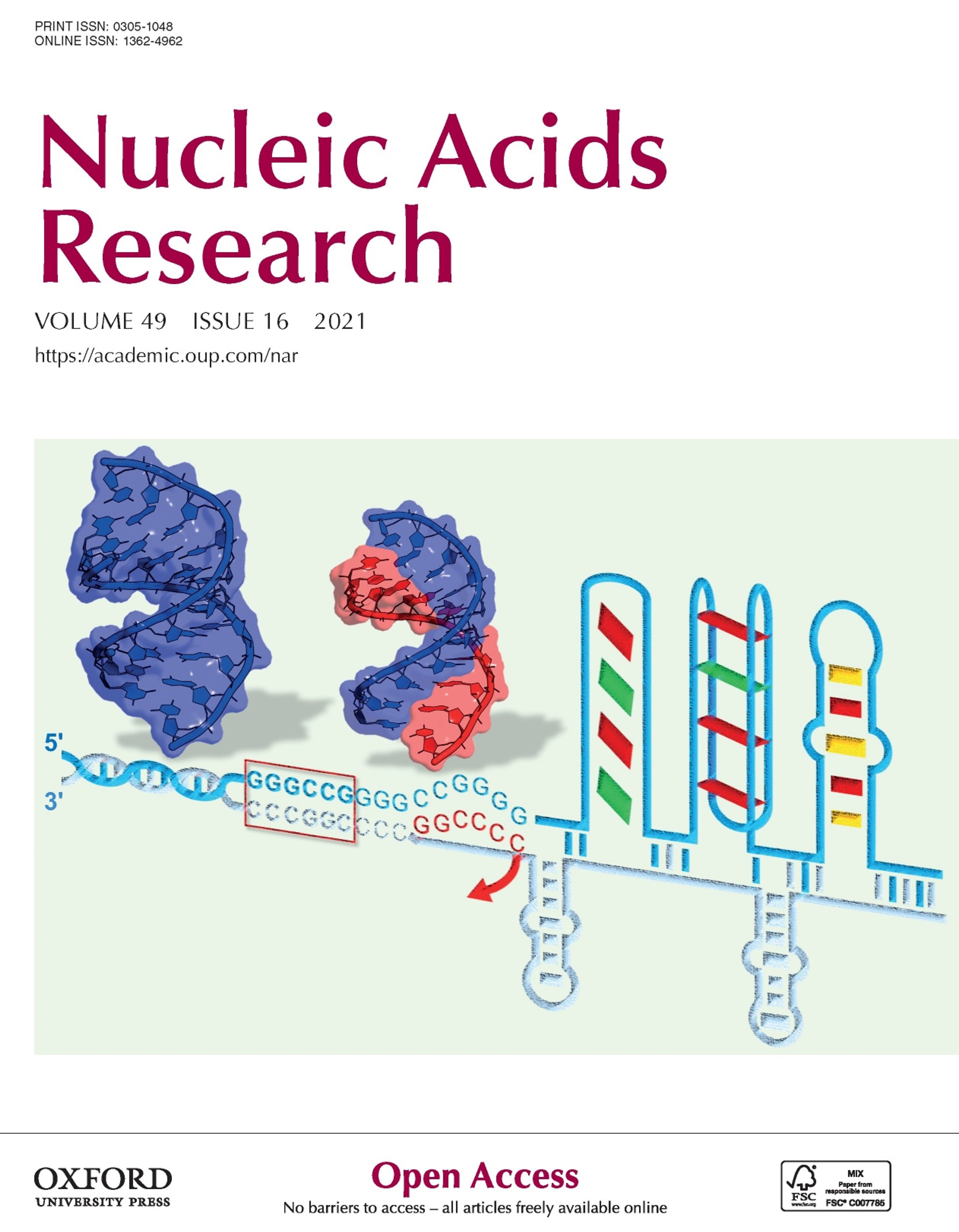
The research findings are highlighted in the cover of NAR
Source- Nucleic Acids Research
Please refer to QR Code for source



